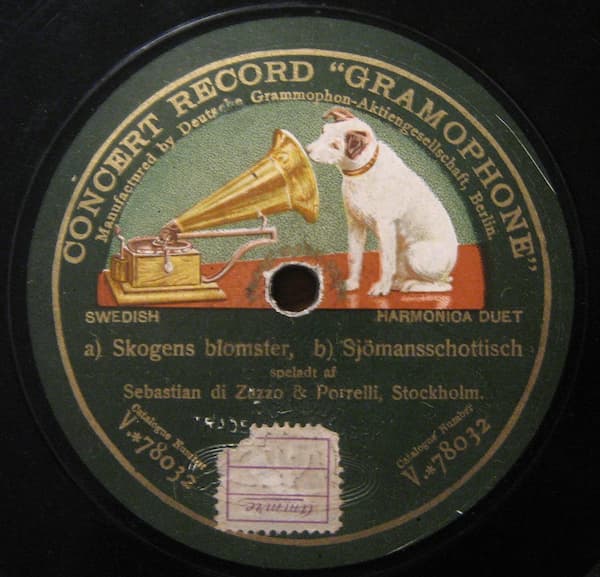Deutsche Grammophon. Or DG. Even those who are not familiar with classical music recognise it as a gauge of quality. It is recognisable instantly, thanks to its yellow stamp, but mostly thanks to the impressive catalog of works that it has released over the years, and the quality which is associated with it. This label is up to this day still one of the most important platforms for classical musicians and releasing a record with them is a stamp of achievement. It seems that classical music as it is today is undoubtedly tied to the history of the label, and how it has helped shape its form in the contemporary world.

Deutsche Grammophon
The German record label was initially founded in 1898 by Emile Berliner, a German-born, United States citizen, based in Hannover. Instantly recognisable through the “His Master’s Voice” or HMV imagery, it has now been replaced by the yellow cartouche banner which first appeared in 1957.

Emile Berliner © Wikipedia
DG was purchased multiple times, and it is now part of the Universal Music Group (UMG). DG’s role in the introduction of the compact disc to the mass market has been considerable, particularly through the works of Herbert von Karajan and the Berlin Philharmonic — the first recording being the 1983 Strauss’ Eine Alpensinfonie. In fact, Von Karajan has been the conductor most associated with the label, with to this day, over five hundred recordings released with DG.
Herbert von Karajan & Berliner Philharmoniker – Sibelius: Valse triste, Op. 44 (Excerpt)
Far from being the only one, many instrumental names appear in the DG roster, including Karl Böhm, Leonard Bernstein, Pierre Boulez, Claudio Abbado — all of which also had multiple releases with the label. Current conductors also included Long Yu, Yannick Nézet-Séguin, and Gustavo Dudamel. The list is almost never ending and growing each year. Today, the number of composers who release with DG is still one of the greatest; Guðnadóttir, Knussen, Turnage, Nono, Greenwood, Dessner, Glass or Richter. Most of these composers are amongst the most influential of the past and current century. If there are many more platforms and labels than at the creation of DG, it still reigns above.
Víkingur Ólafsson – Glass: Étude No. 5
Finally and in more recent years, DG launched a collection of series in order to diversify the catalog of the label; from the Originals, to Collector’s Editions, Virtuoso, Spotlight, Grand Prix and many other compilations series, as well as more modern approaches such as with the Fragments series, Recomposed or Project XII which allows lesser-known artists to be introduced to a wider audience.

Record of Emile Berliner’s Deutsche Grammophon Gesellschaft © Wikipedia
It is difficult to ignore the label when it comes to classical music, and just like Blue Note in the world of jazz and Capitol in the world of pop music, DG still stands as a gauge of high quality, as well as a career goal for many recording artists. The label has shown great adaptability skills, and to this day still stands at the forefront of contemporary music producing and releasing records which after a few decades will themselves become a testament of their times. Through this constant growth, Deutsche Grammophon has never lost its identity nor its substance. The Gramophone Company also founded the now legendary British record label and store, founded in 1901, His Master’s Voice or HMV.
For more of the best in classical music, sign up for our E-Newsletter



